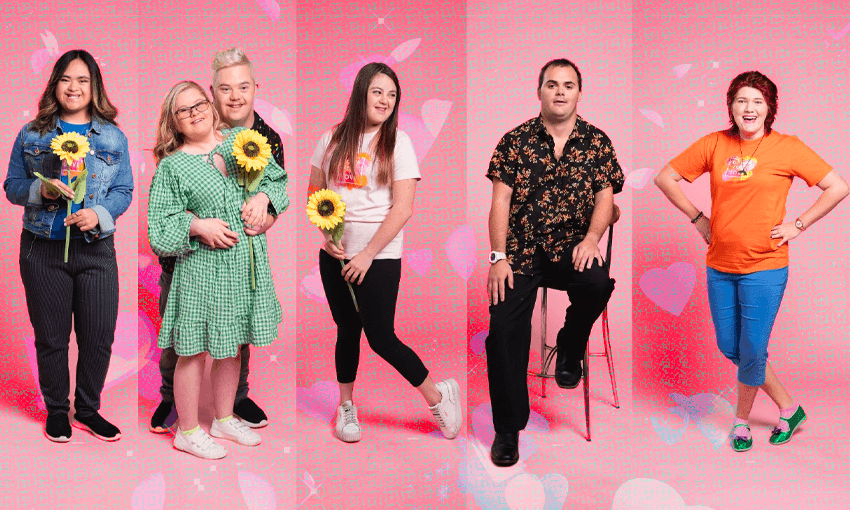It doesn’t pull punches, and it doesn’t exploit its participants. Sam Brooks reviews TV’s most remarkable dating show.
The premise
After a successful (and critically acclaimed) first season, dating show Down For Love returns with another unsentimental yet warm look at the dating lives of people in the Down Syndrome community. This second season catches up with a few previous participants – “contestants” is absolutely not the right word here – while introducing us to plenty of new faces, adding more colour and detail to the spectrum of experience within the community.
Although nominally a dating show, Down For Love thankfully lacks the heavy production and exploitation that you might associate with the format. This isn’t Too Hot to Handle or Love is Blind, where the cast is ambushed by bizarre rule changes and technical challenges. It’s not an experiment, or a chance to laugh at people. It’s opening the curtains, inviting us into a world we might not have any understanding of.
The good
It goes without saying that a show like Down For Love treats its cast with as much respect and care (you can read more about that in Alex Casey’s story about the first season and Attitude, the production company behind the show), and that is a net good for the world. The more that the diversity we see in our onscreen worlds reflects the diversity that exists in the IRL world, the better.
Where the series differs from other dating shows, however, is that the cast aren’t in enclosed environments, surrounded by cameras and producers. The audience gets a sense of each cast member’s life outside of the dates, like Clayton’s home life in the small West Coast town of Karamea, where he sells sunflowers at the weekend markets. We see how he interacts with his family, the world around him, and get to properly know him before he even goes on a date to begin with. It’s a clever, and wise, choice, because it means we’re that much more invested in whether or not those dates go well.
Respect doesn’t mean handling with kid gloves, though – because those dates don’t always go well! Respect means looking subjects in the eye and regarding them honestly. It’s not just the lens of Down For Love that does this, but the individual choices – moments like showing Chloe wringing her hands before her blind date go-karting with Nathan, or Saione and Lily missing a connection initially on their first date at a tree-top obstacle course but then, eventually, finding that spark. It shows that, shockingly, you can make dramatic, compelling television without sacrificing or disrespecting the humanity of the people on screen.
The frame that the show puts around the cast is crucial to why it works. Down For Love isn’t invested in the success of couples, necessarily, but it is crucially invested in letting the cast be independent adults, who can (and do) decide what will work for them and what doesn’t. Without ever feeling like it’s pulling on the strings of production, or overly manipulating the heartstrings of the audience, it shows us the cast as real people, rather than subjects to be coddled or have their rough edges sanded down.
We’re used to seeing the less-than-glamorous sides of people’s feelings on TV, and Down For Love doesn’t shy away from those aspects of the characters either – as in an especially heartbreaking moment where Saione doesn’t understand why Lily hasn’t texted back, and has to have it gently explained to him. He’s hurt and confused, and the series never shies away from that. It’s better for it.
The not-so-good
It is slightly dissonant that the voiceover is done by a conspicuously British (or at least British sounding) lady. It’s not at all bad – she has a lovely, plummy TV voice – but it does disconnect from the show a bit, making it feel less like a dating show and more like a documentary.
The verdict
It’s corny to say that representation matters. Of course it does. But what turns Down For Love from a show that matters into a show that is genuinely great is its approach. It would be easy for this show to be heartwarming and soft. It’s clear that Attitude has no interest in making that show.
Instead, Down For Love is complex, beautiful, and not always easy to watch – it sucks to see people not quite meet each other in the way that they wanted to. Other dating shows would do well to take notes.



